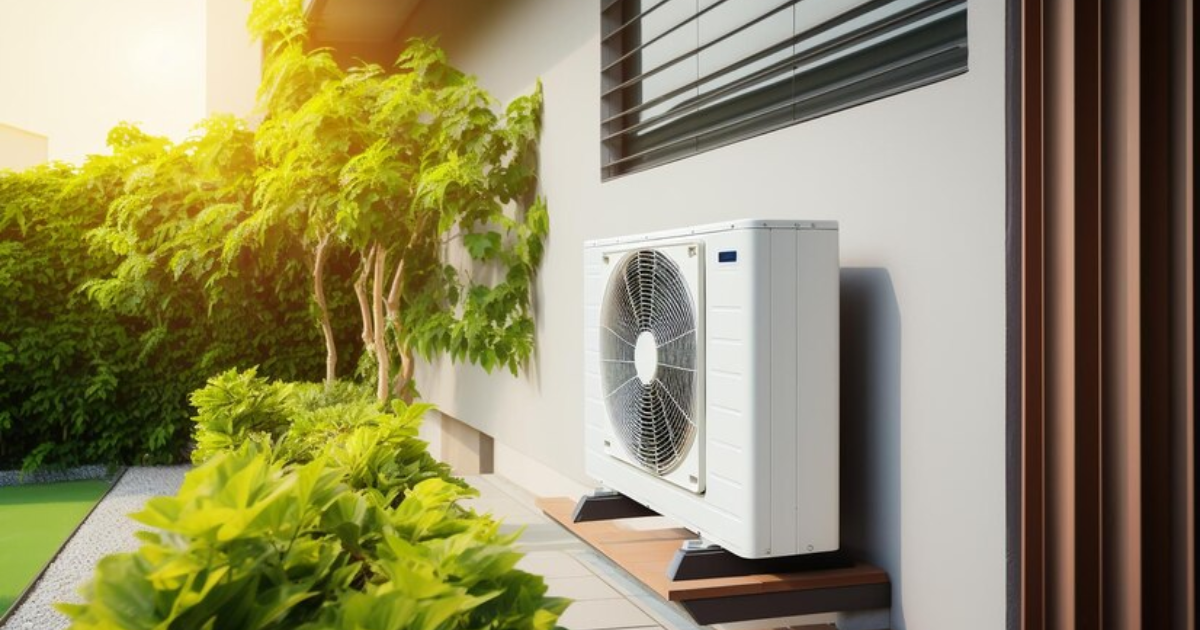Due to numerous advantages, air-source heat pumps are increasingly used for central home heating and hot water preparation. This applies to both newly constructed buildings and older buildings that are undergoing thermal insulation. Many homeowners are now considering a heat pump replacement to upgrade their existing systems and benefit from the improved efficiency and cost savings these modern devices offer.
What is a heat pump used for?
Heat pumps work by creating a circulation of heat between areas with different temperatures. They extract heat from the air or ground and transfer it to the home heating system – for example, radiators or an in-floor heating system. Due to the high efficiency offered, their popularity is growing faster and faster, and many experts already consider just such a way of heating objects the best among those available on the market.
It is worth mentioning that in 2021, there was a sharp increase in sales of these devices by 80% compared to the previous year. The most popular were air-to-water heat pumps. Customers’ great interest in these devices is not only due to the desire to significantly reduce the cost of heating buildings but also to the possibility of increasing their energy security and obtaining subsidies for replacing the conventional heat source with a heat pump. Many homeowners are now exploring the heating pump replacement scheme to take advantage of these benefits.
How does a heat pump work?
The operation of a heat pump is to transfer energy from the environment (the so-called lower heat source) to the building so that it can efficiently power its heating system (the so-called upper heat source) – both on the heating and hot water preparation sides.
The main task of the device’s operation is to collect and transfer energy from the environment – if this is done from the ground, a glycol solution is used, and in the case of air, the ambient energy is transferred directly to the working medium circuit. With the help of the heat received, the working medium is vaporized in a device called an evaporator.
What kind of heat pump to choose?
To make your investment in a heat pump pay off fairly quickly, you need to match the best heat source for it. Whether water or ground, vertical or horizontal heat exchangers will perform better in this role depends largely on our plot of land. There are many technical solutions for heat pumps on the market, and the choice of one particular one should be the result of the technical possibilities and energy needs of the building. The most common variant of technological installation of a heat pump is:
Monoblock and split-type solutions
A split-type heat pump consists of two modules, one of which is installed outside and the other inside the building. The indoor module specifically contains the condenser, and the two modules are connected by refrigeration pipes.
A monoblock heat pump is one module containing the complete refrigeration circuit of the pump, which is installed outside the building. If you are considering the possibilities of technology when making a purchase, you should look in particular at the technical capabilities of the building and check the existing system used to distribute heat.
Air heat pumps
Air source heat pumps are a type of device that uses the outside air as the lower heat source. They can occur in both split and monoblock variants. The undoubted advantages of the described solution include a relatively low investment cost, the many models of equipment available on the market, and ease of installation. When choosing this solution, however, you should reckon with the fact that as the outside temperature drops, it appears that the air heat pump will need a booster source.
Ground heat pumps
Ground-source heat pumps are devices that operate on the same principle as air-source heat pumps, with the difference that in the case of the former, the lower heat source is the energy contained in the heat of the ground.
- To use the heat in question, the ground heat pump is equipped with a ground heat exchanger, which can be installed vertically and horizontally.
- Among the undoubted advantages of the solution is the constant temperature of the ground (bottom source), which translates into much greater stability of the pump’s instantaneous output.
- However, in the case of this type of investment, we at Alpha Mechanical highlight management on significant financial outlays related, among other things, to the drilling of boreholes for the ground exchanger and the ground exchanger itself.
- The lower heat source for this technology can also be water reservoirs, which, in the bottom areas, maintain a relatively constant temperature throughout the year.
Hybrid heat pumps
Hybrid heat pumps generally use two power sources. A common case is the cooperation of a condensing gas-fired boiler with an air-source heat pump. Such devices work alternately, depending on the outside temperature, energy costs, and the required heating power. A special advantage of such a solution is also increased energy security – in the event of the failure of one device, the other one is created as a substitute. In addition, thanks to the use of a hybrid heat pump at the stage of construction of the building, it is also possible to design its cooling system without investing in a separate air conditioning system. When considering a hybrid system, it’s important to factor in the cost of replacing a heat pump to ensure it fits within your budget.
Gas heat pumps
Gas heat pumps, unlike units equipped with an electric compressor, use energy from the combustion of natural gas to drive a refrigeration system. This technology, on the heat-receiving side, provides the sum of the energy contained in the air, ground, or water (depending on the type of pump used) and the energy contained in the natural gas being burned. Due to the emissions produced by burning the gas, the device is designed entirely for outdoor installation.
Reversible heat pumps
Reversible heat pumps make it possible to reverse the pump’s heating method, i.e., taking heat from the building and transporting it to the outside environment. With such a method, you get a cooling effect for the rooms, especially desirable in the summer.
Conclusion
When choosing a heat pump, it is important to consider the technical capabilities and energy needs of the building. Every year, more and more people choose heat pumps as the most innovative and environmentally friendly way to heat their homes. This is the technology of the future, which is already changing the approach to comfort and energy efficiency in our homes.
https://prnt.sc/0FKtbrs08IdZ
https://prnt.sc/_2Zx_e5aTRnW
Read More On: TechNewzArt

